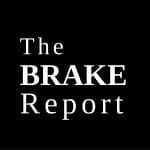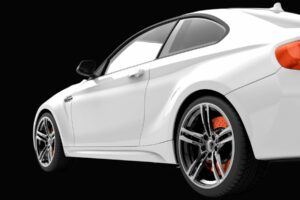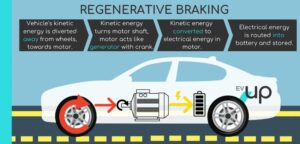Article by: Bernat Ferrer, Project Manager, Braking Systems in Applus IDIADA
In Part 1 of the article, the study of the most important public road brake durability standards has been presented. The objective is to obtain a full characterization of the durability patterns found in the European, American and Chinese markets, thus obtaining global indexes that can directly compare each test against a given reference.
Route Description
The table below shows the route profile of each brake durability standard, where the following conditions are distinguished: city traffic, outer ring & highway, and country road:
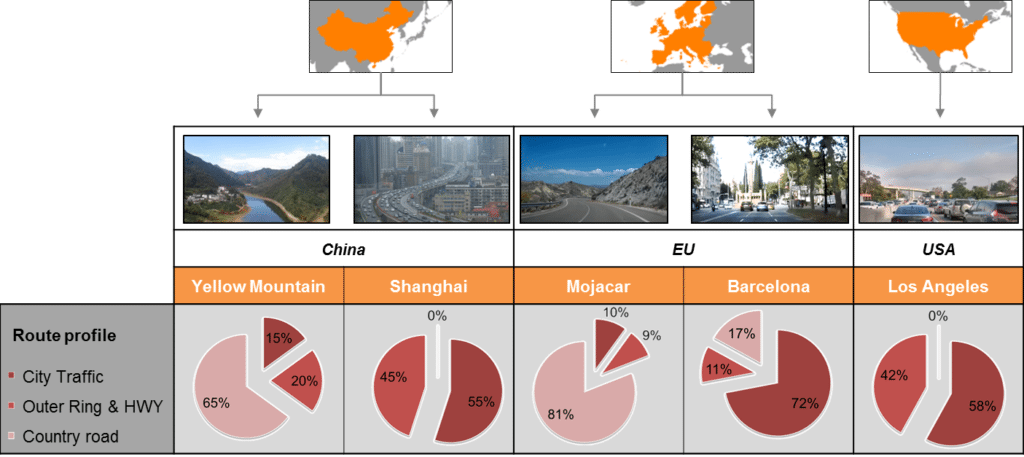
On the other hand, objective outputs from the instrumented vehicles provide information about the traffic and driving style at each specific location:

The distribution of the vehicle speeds also reveals valuable conclusions. Shanghai, for instance, reflects heavy city traffic conditions: the car is completely stopped about 40% of the time. Yellow Mountain, on the other hand, stands out at mid-speeds (50 to 70 km/h), while Mojácar tends to be very present at higher ranges (80 to 120 km/h). This is caused by boundary conditions such as traffic and the type of roads, as well as the driving style of the local drivers.

Brake Usage
Concerning brake usage, it is fundamental to consider the distribution of the brake applications over the different vehicle speed and deceleration levels. Again, Shanghai predominates at lower deceleration ranges, while Yellow Mountain stands out at the mid speed range.

Brake temperatures can have an important impact on wear and noise. The table below indicates the average front temperature over a lap, and the maximum values:

However, peak temperatures do not clearly show the actual brake usage during a whole lap. The following graph shows the accumulated driving time above certain temperature levels. In this way, the Yellow Mountain route (despite having a similar average lap temperature to Shanghai or Barcelona) becomes more dominant when the brakes reach temperatures above 180 ºC. Mojácar, nonetheless, clearly stands out as the worst scenario:

Routes Severity
A final approach to determine whether a route is demanding for the brakes is to quantify the dissipated energy. The brake load factor (BLF) is the average accumulated energy per kilometer dissipated by all corner brakes. The brake power factor (BPF), on the other hand, takes into account the stopping actuation time.

The analysis reflects a higher severity of the country road routes with similar figures for Yellow Mountain and Mojácar. Shanghai appears as the most severe city traffic —especially differentiated from Barcelona and Los Angeles in terms of BPF. This could be caused by a more abrupt way of applying the brakes, as the level of energy is reached with a shorter time of application and with higher decelerations, thus being more demanding for the friction material.
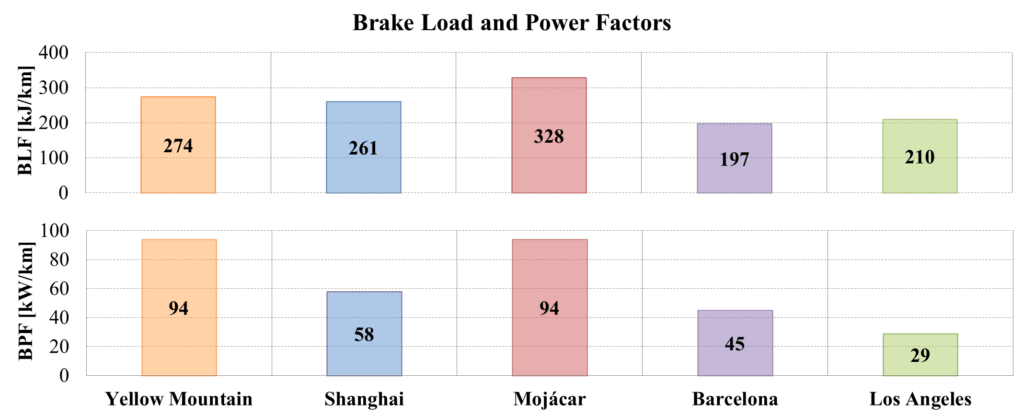
Having seen the main results associated with the brake usage and the severity of the routes, the next (and final) section will present the brake wear and noise data.
About Applus IDIADA
With over 25 years of experience and 2,450 engineers specializing in vehicle development, Applus IDIADA is a leading engineering company providing design, testing, engineering, and homologation services to the automotive industry worldwide.
Applus IDIADA is located in California and Michigan, with further presence in 25 other countries, mainly in Europe and Asia.


